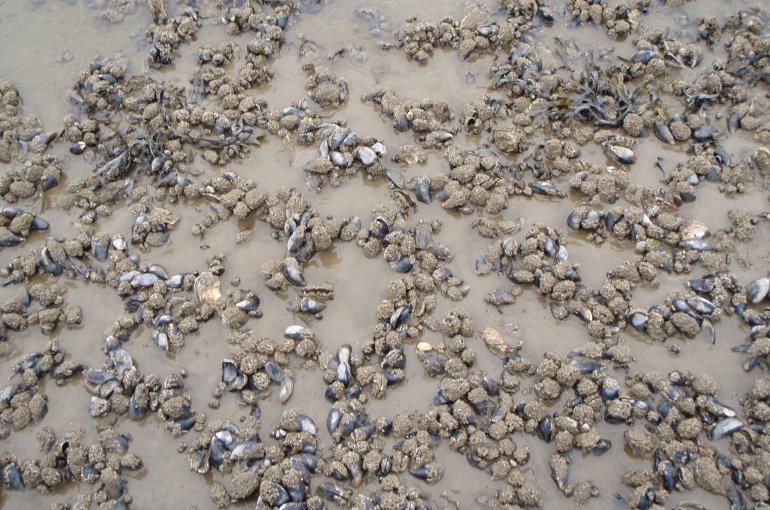Mussels work together

Publication by Monique de Jager et al. in Evolutionary Ecology
Mussels work together to overcome the many dangers of everyday life, and arrange themselves into spatial patterns that keep up the cooperation. Mussels create a glue-like substance, called byssus threads, to each other’s shell. These threads bind mussels together and make them less susceptible to predation and dislodgement by wave stress. Because a mussel may profit from its neighbours’ investments in byssus threads, cooperating less than others might be a very profitable strategy. Researchers have now shown that mussels can influence the evolved level of cooperation by moving into spatial aggregations where each mussel has a certain number of neighbours to cooperate with. Especially in stressful environments, clustering together causes mussels to cooperate most intensely. The results from the study, led by Utrecht University biologist Monique de Jager, is published online in Evolutionary Ecology

